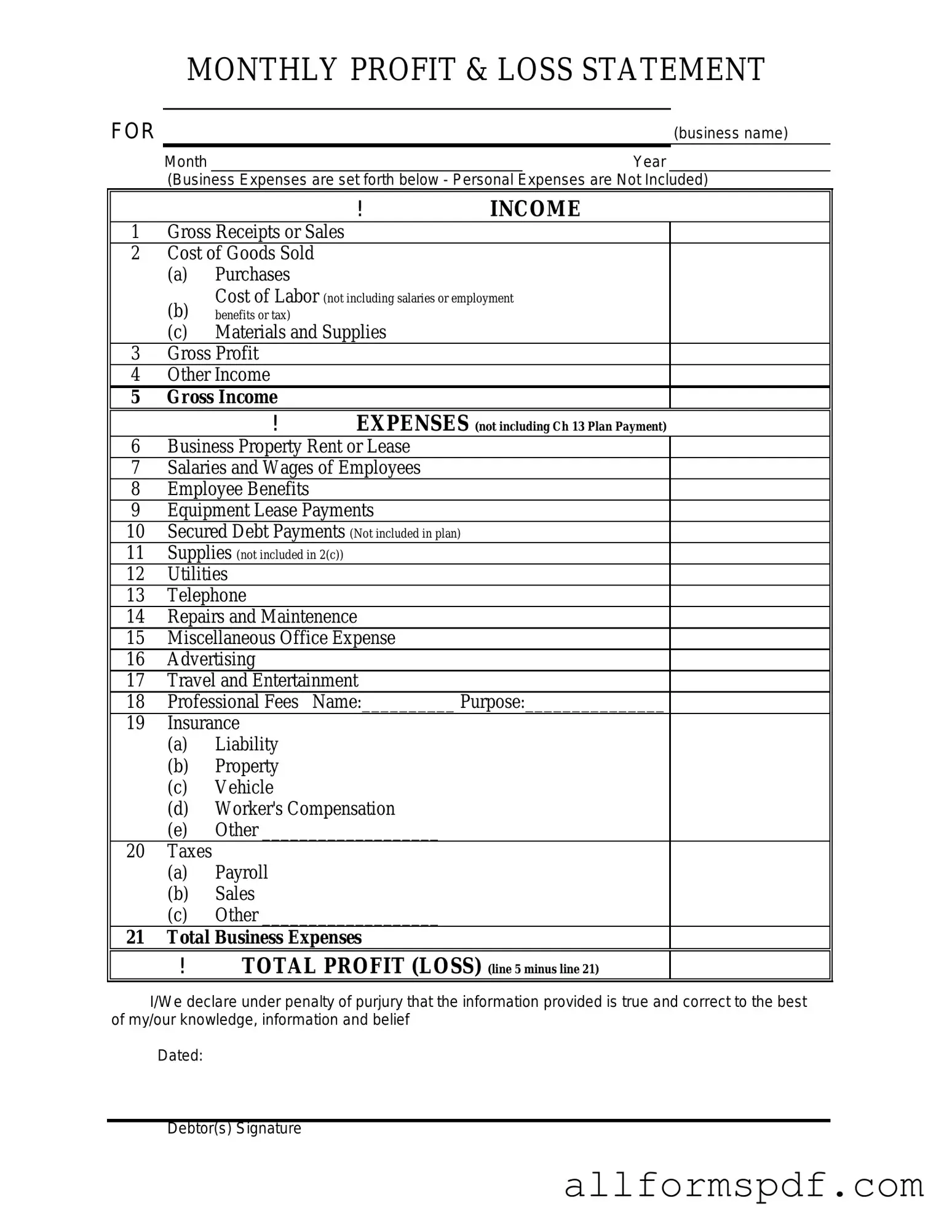Filling out a Profit and Loss (P&L) form can seem straightforward, but many people make common mistakes that can lead to inaccurate financial reporting. One frequent error is failing to include all income sources. It’s essential to capture every dollar earned, whether from sales, services, or other revenue streams. Omitting even a small amount can skew the overall picture of a business’s financial health.
Another common mistake is misclassifying expenses. When expenses are categorized incorrectly, it can affect tax deductions and financial analysis. For instance, mixing up operational costs with capital expenditures can lead to misunderstandings about profitability. It’s important to be diligent about where each expense falls on the form.
Some individuals overlook the importance of updating the form regularly. A P&L statement should reflect the most current financial data. If you only update it annually or infrequently, you may miss out on critical insights into your business’s performance. Regular updates allow for timely adjustments and better decision-making.
Another mistake is ignoring seasonal variations. Many businesses experience fluctuations in income and expenses based on the time of year. Failing to account for these changes can lead to misinterpretations of financial stability. It’s wise to analyze trends over multiple periods to gain a clearer understanding of performance.
Some people also make the mistake of not reconciling figures. Before finalizing the P&L, it's crucial to ensure that the numbers match up with bank statements and other financial records. Discrepancies can indicate errors that need correction, and reconciling helps maintain accuracy.
Additionally, neglecting to include non-operating income and expenses can lead to an incomplete financial picture. These items, such as interest income or investment losses, can significantly impact the bottom line. Including them ensures that the P&L reflects all aspects of financial performance.
Another error is failing to analyze the results after filling out the form. Simply completing the P&L isn’t enough; it’s crucial to interpret the data. Understanding trends and variances can help identify areas for improvement and inform future business strategies.
Lastly, not seeking professional help when needed can be a significant oversight. If the process feels overwhelming or complex, consulting with a financial advisor or accountant can provide clarity and ensure accuracy. They can help navigate any tricky areas and provide valuable insights into best practices.
